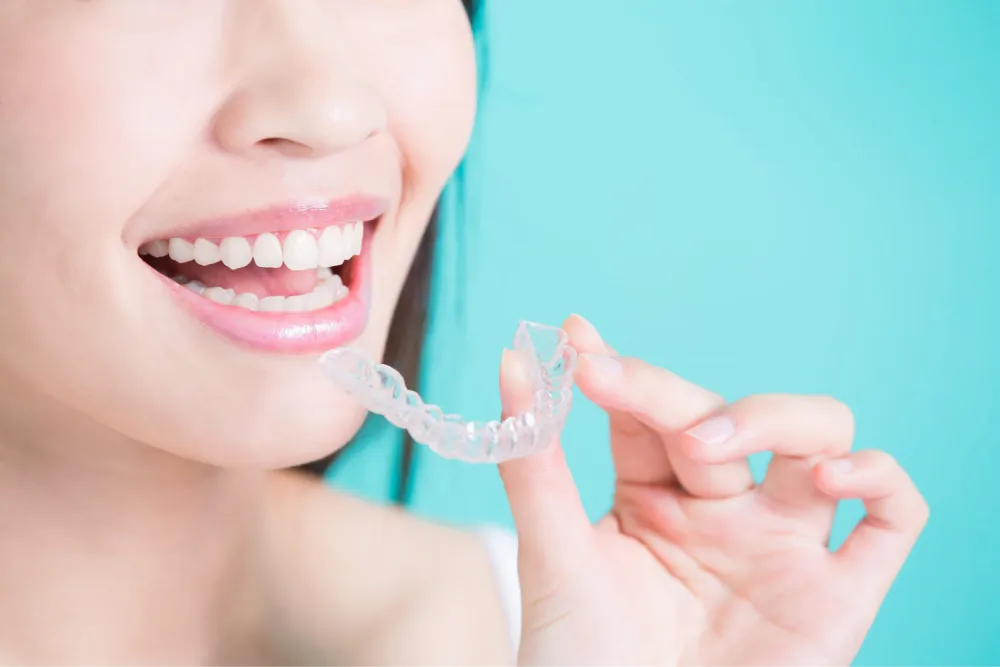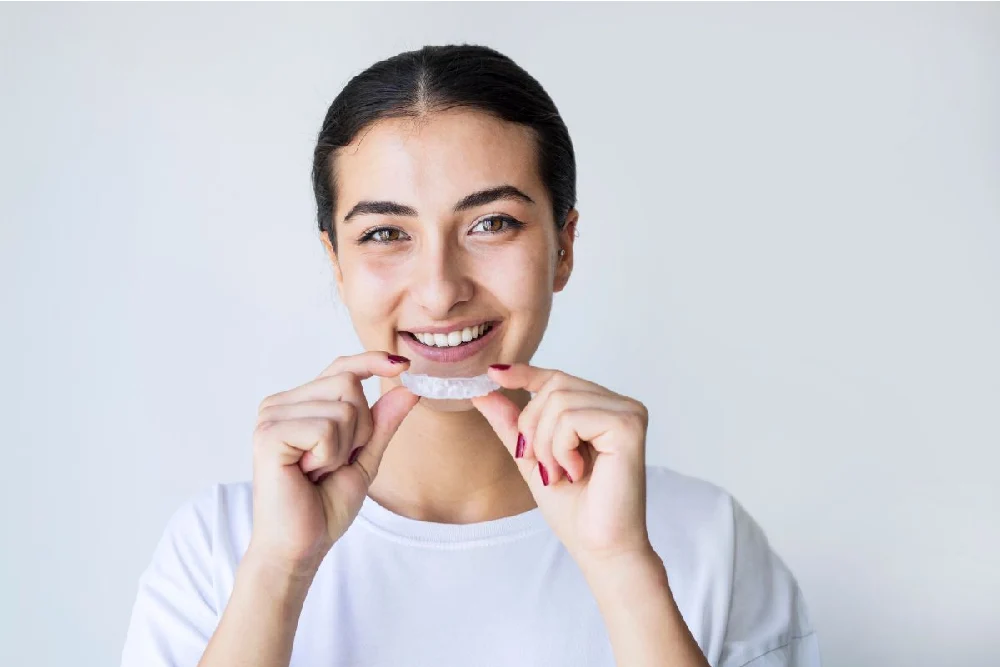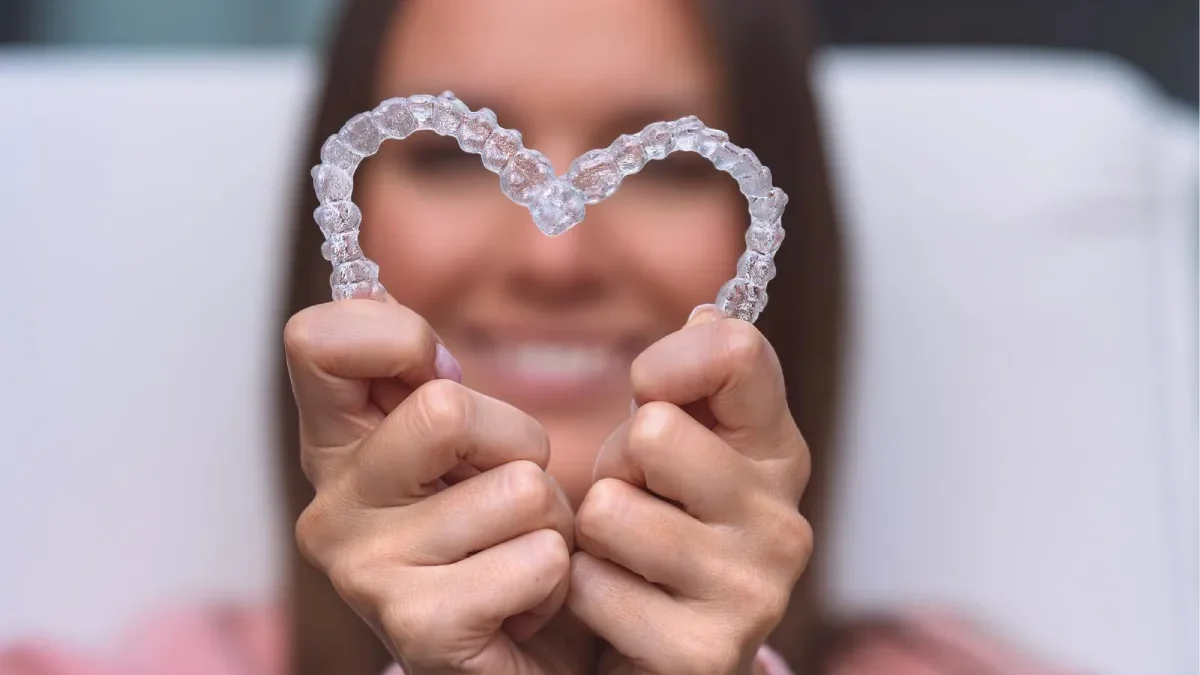Are you dreaming of a straighter smile but dread the idea of traditional braces? Invisalign could be your clear solution.
This innovative treatment uses almost invisible aligners to gently guide your teeth into place, revolutionizing the way we think about orthodontics.
In this article, we’ll delve into the reality of Invisalign invisible braces. We will help you get your expectations about the treatment right while also shedding light on what it’s genuinely like to transform your smile with clear aligners. Just keep reading!

Table of Contents
Invisalign Invisible Braces
Invisalign is a cutting-edge orthodontic treatment that uses a series of custom-made, clear aligners to straighten teeth discreetly and comfortably.
Unlike traditional braces, these aligners are virtually invisible and can be removed for eating, brushing, and flossing, offering a level of convenience and confidence that metal braces can’t match.
Tailored specifically to your dental structure, Invisalign aligners gently shift your teeth into the desired position, transforming your smile without drawing attention to your treatment.
The invisible braces are ideal for adults and teens alike. That way, it is seen as an effective, nearly undetectable route to improved dental alignment.
What Conditions Can It Correct?
Invisalign is not just about aesthetics; it’s a versatile treatment capable of addressing various orthodontic issues.
It’s particularly beneficial for correcting mild to moderate dental misalignments, including overcrowded teeth, gaps between teeth, and certain bite irregularities such as overbite, underbite, crossbite, and open bite.
While it’s a versatile treatment, the extent of its effectiveness can vary, depending on the complexity of the case. For those with severe alignment or bite issues, they might need to consult an experienced orthodontist to determine if Invisalign is the most suitable option.
How Effective Are These Aligners?
Invisalign aligners are highly effective for a wide range of patients, delivering impressive results for those with mild to moderate orthodontic issues.
However, the success of the treatment largely depends on patient compliance. Wearing the aligners consistently for the recommended 20 to 22 hours per day is crucial for achieving the desired outcome.
Many studies and patient testimonials have shown how successfully the invisible braces can straighten teeth and correct various dental conditions when used as directed.
However, the effectiveness can vary based on the individual’s specific dental needs, the complexity of the case, and adherence to the treatment plan.
Pros of Invisalign
Invisalign offers several compelling advantages that make it a popular choice for teeth straightening.
Its near-invisibility is perhaps the most significant benefit, allowing users to undergo treatment discreetly without the self-consciousness often associated with traditional metal braces. But that’s not all; let’s look at some other benefits the invisible braces offer.
- Discreet Treatment: Invisalign clear aligners are virtually invisible, offering a subtle way to straighten teeth without the visibility of metal braces.
- Removable Aligners: You can easily remove the aligners to eat, drink, brush, or floss, ensuring better oral hygiene and no dietary restrictions.
- Fewer Orthodontist Visits: Without the need for bracket tightening or wire adjustments, it often requires fewer dental appointments, which is ideal for those with a busy schedule.
- Enhanced Comfort: The custom-made, smooth plastic aligners are designed to fit snugly over your teeth, reducing irritation to the gums and mouth compared to traditional braces.
- Predictable Results: Using advanced 3D imaging technology, Invisalign provides a clear picture of the treatment outcome from the start. You can see what results to expect even before your treatment commences.
What Are Some Downsides to Expect?
While the effectiveness and success story of the treatment is what everyone talks about, there are also some potential downsides you should know about.
Patient Discipline Required: The effectiveness of Invisalign heavily depends on the wearer’s commitment to keeping the aligners in for the recommended 20 to 22 hours a day. Lack of discipline can lead to less effective results.
Upfront Cost: It can be more expensive initially compared to traditional braces, which might not be feasible for everyone’s budget.
Not Suitable for All Cases: Invisalign is ideal for mild to moderate dental issues but may not be effective for severe orthodontic conditions that require more complex movements or adjustments.
Possible Discomfort: While generally more comfortable than metal braces, some users may experience temporary discomfort or pressure when a new set of aligners is first worn.
Maintenance: Aligners need to be cleaned regularly to avoid staining and odour, adding a step to one’s oral hygiene routine.
Attachments: Some cases may require attachments or ridges to help the aligners grip the teeth, which can slightly mar the ‘invisible’ look of Invisalign.

How Long Does It Take to Straighten Teeth With Invisalign?
This solely depends on the individual’s specific dental needs, but on average, it ranges from 12 to 18 months. However, some may see improvements in as little as six months, while more complex cases might require a bit longer.
The treatment time depends on factors like the extent of alignment needed and how diligently the aligners are worn. Again, consistent wear of the aligners is crucial for staying on track with the projected timeline.
Does Invisalign Cause Sensitive Tooth?
Invisalign can lead to temporary tooth sensitivity for some individuals, especially when switching to a new set of aligners.
This sensitivity is typically due to the pressure applied to the teeth to move them into the desired position. However, this discomfort is usually mild and subsides after a few days as the teeth adjust to the new aligners.
The experience of sensitivity varies from person to person. Some might not feel any discomfort, while others may notice mild sensitivity, particularly when biting down.
However, this sensation is generally less intense compared to traditional braces and is a sign that the aligners are working as they apply the necessary force to reposition your teeth.
If tooth sensitivity persists or is severe, you should discuss it with your dentist or orthodontist. They can offer advice or solutions to help mitigate the discomfort, ensuring the treatment process is as comfortable as possible for you.
Can It Affect My Speech?
Invisalign aligners can temporarily affect your speech, causing a slight lisp or change in pronunciation when you first start wearing them.
This is because the aligners add a small amount of extra thickness to your teeth, which can alter the way your tongue moves against them during speech. However, this adjustment is typically minor and temporary.
Most people adapt quickly to the presence of the aligners, and any speech irregularities usually resolve within a few days to a week as you become accustomed to the new feeling in your mouth. Practicing speaking, reading aloud, or even singing can help accelerate this adjustment period.
Take the Step Towards Your Perfect Smile
Are you ready to transform your smile without the world noticing? Invisalign offers a revolutionary path to straighter teeth.
If you are in Glasgow and its environs and have been considering this innovative treatment, don’t wait any longer.
Consult with an Invisalign-certified orthodontist today to explore your options and take the first step towards the confident, radiant smile you deserve. Your new smile is just an appointment away!

